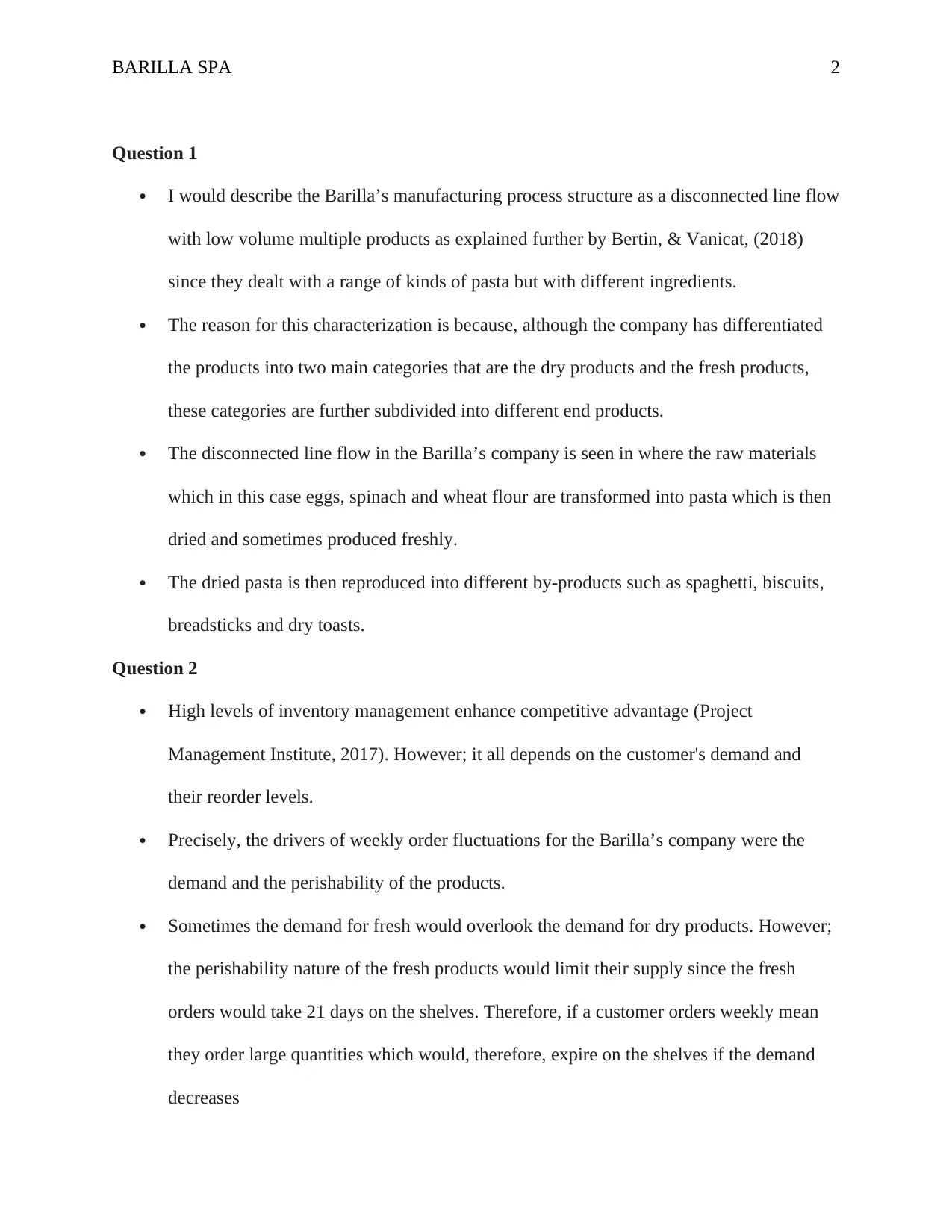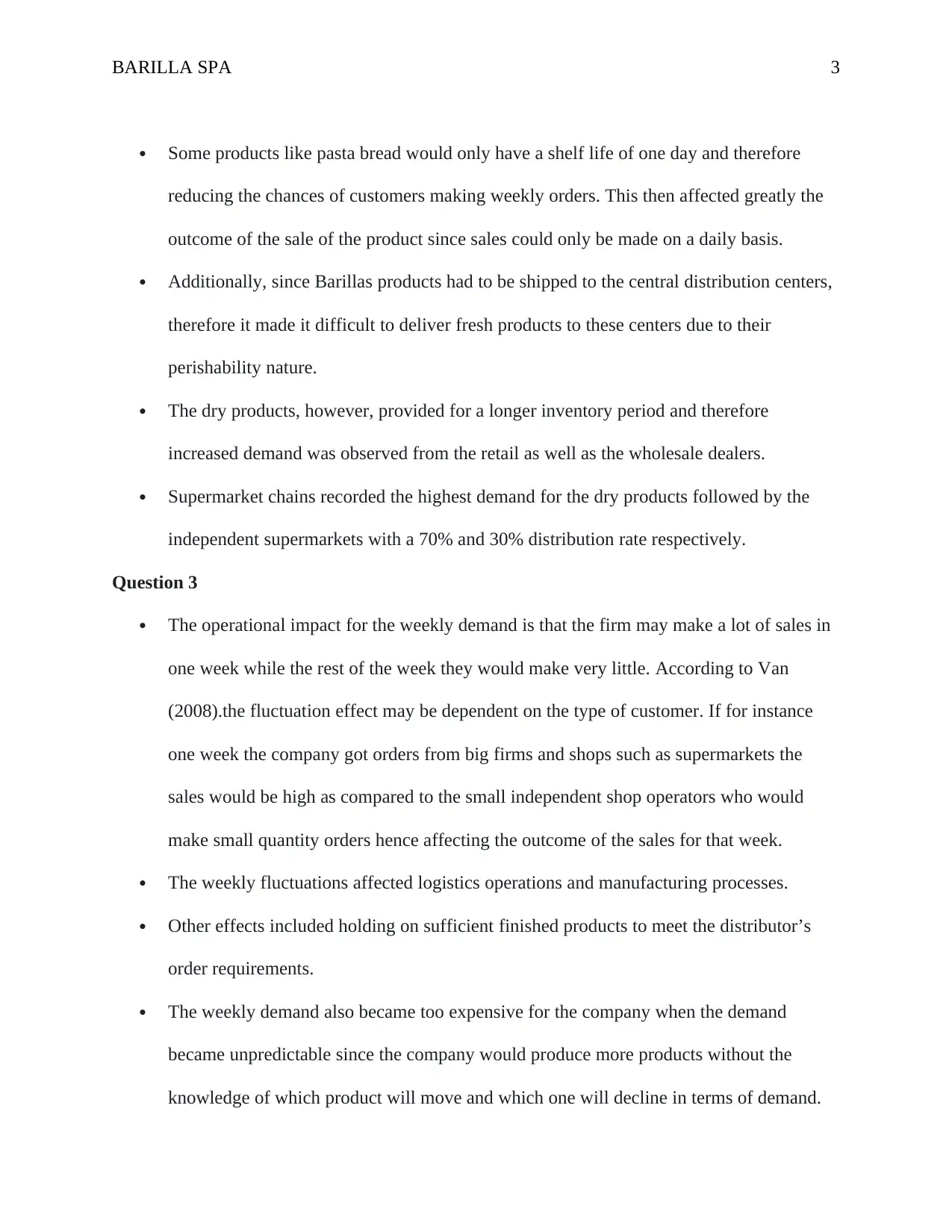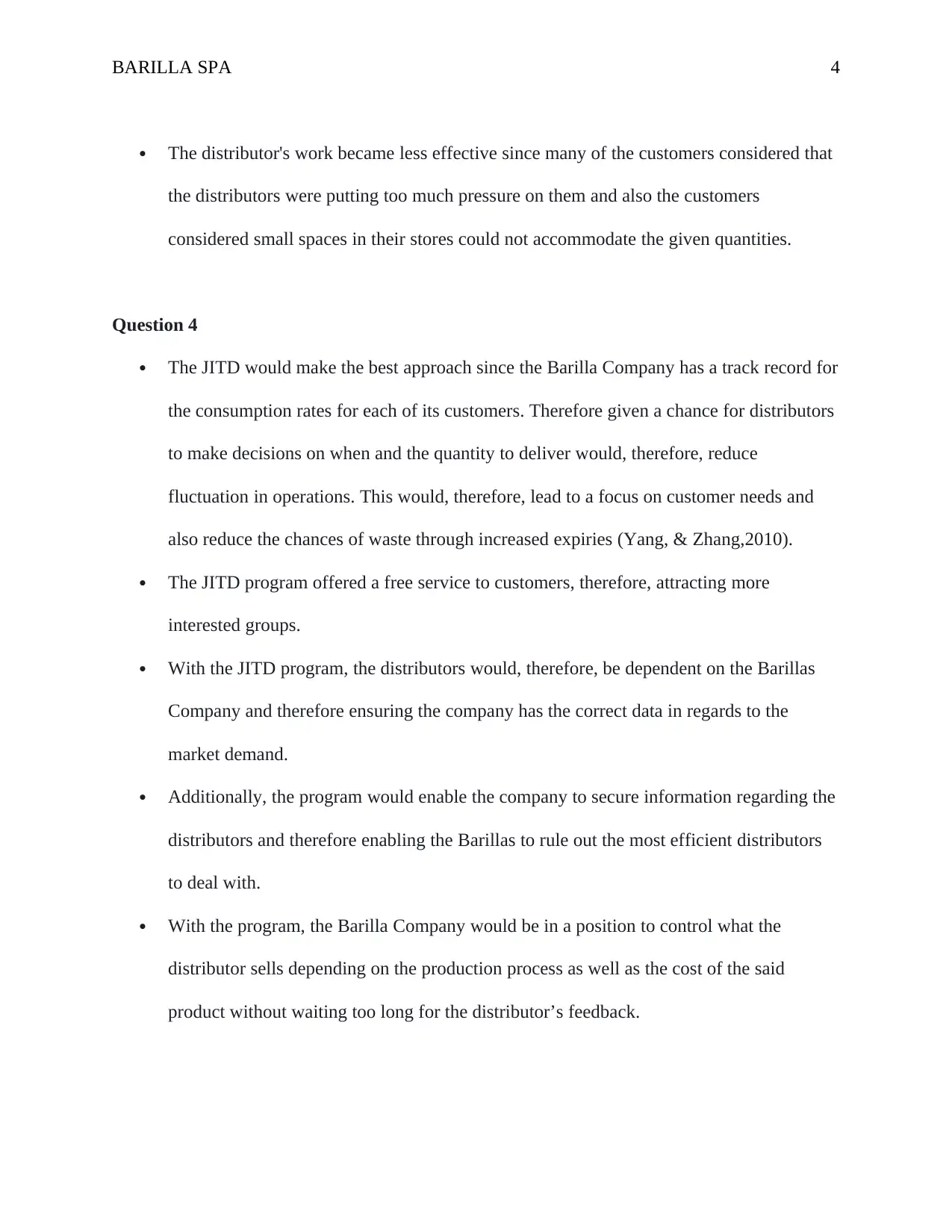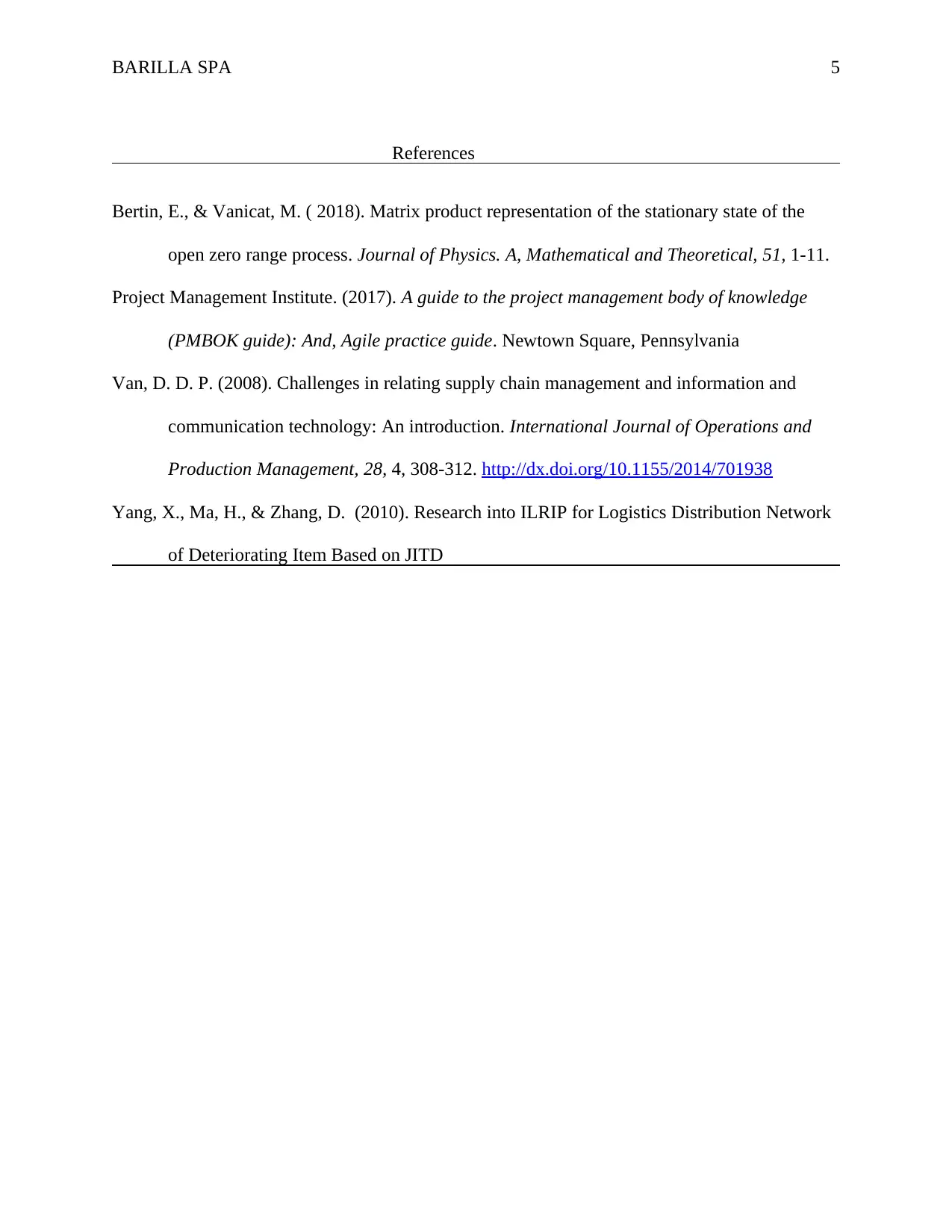Business Development: Barilla SPA Case Study Solution and Analysis
VerifiedAdded on 2022/09/01
|5
|975
|44
Case Study
AI Summary
This document provides a comprehensive analysis of the Barilla SPA case study, addressing key questions related to its manufacturing processes, inventory management, and demand fluctuations. The analysis begins by characterizing Barilla's manufacturing structure as a disconnected line flow with low volume multiple products, differentiating between dry and fresh pasta categories and their various sub-products. The study explores the impact of weekly order fluctuations, driven by demand and product perishability, highlighting how these factors affect inventory levels and sales. Furthermore, the operational impacts of weekly demand are examined, including fluctuations in sales, logistical challenges, and increased production costs. Finally, the analysis recommends a Just-in-Time Distribution (JITD) approach, emphasizing its potential to reduce operational fluctuations, focus on customer needs, minimize waste, and improve distributor relationships.
1 out of 5






![[object Object]](/_next/static/media/star-bottom.7253800d.svg)